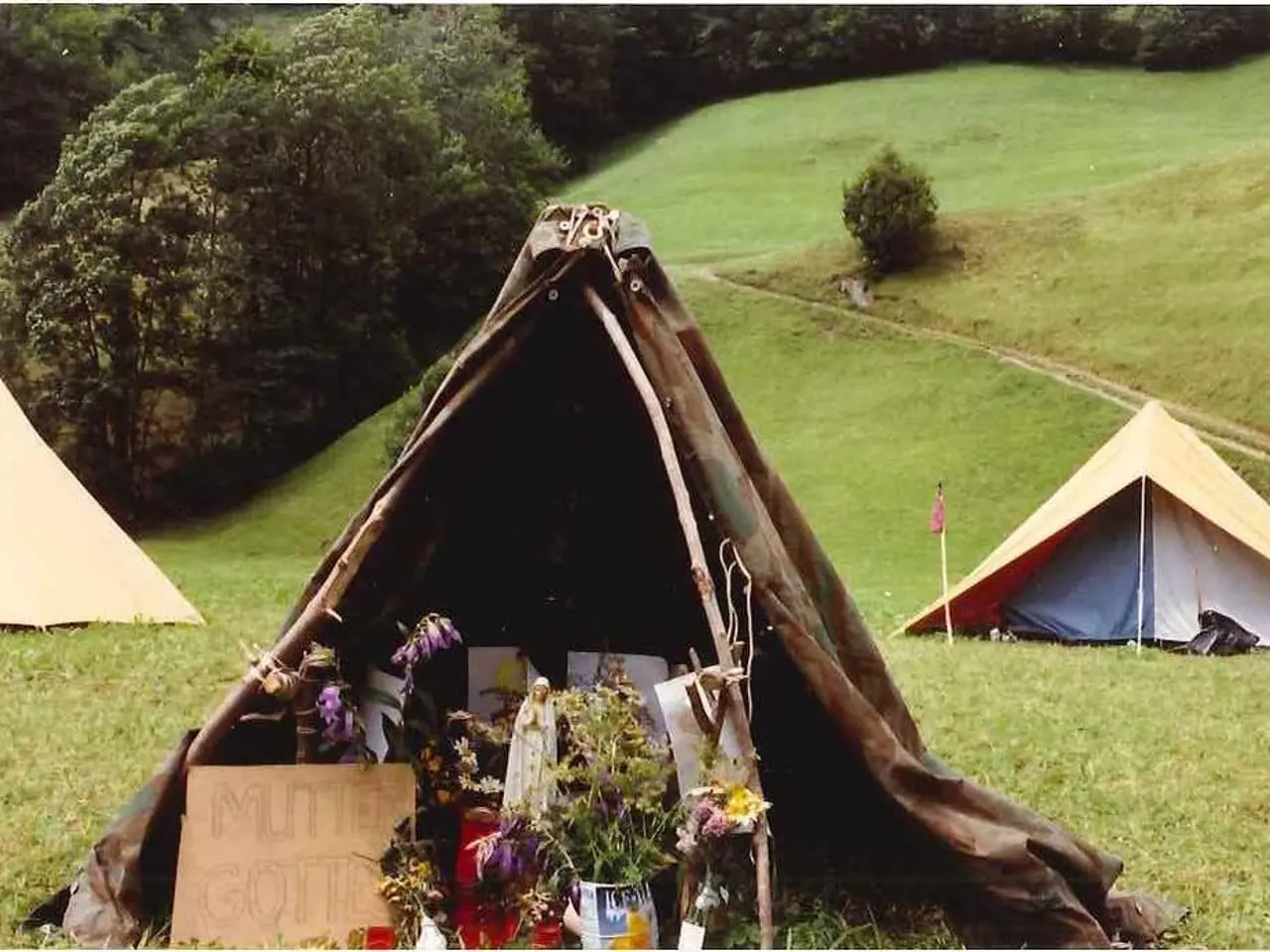Eight Landscaping Partition Concepts for Achieving a Room-Like Feel in Your Garden
In the art of landscape design, creating distinct outdoor zones is essential for achieving a beautiful and functional outdoor oasis. Ryan Street Architects, for instance, designed a landscape as a sequence of outdoor experiences, using stone, water, and lawn as structuring elements.
One effective garden divider idea is tiered landscaping. Using different levels or grades in the garden to create subtle divisions without high walls allows for dedicated spaces for activities like swimming, dining, or relaxing, defined gently by changes in elevation, low walls, or planting.
Built-in stone walls that double as seating act as practical, visually appealing dividers that define spaces without interrupting the garden’s natural flow. These elemental materials create timeless partitions that invite lingering rather than rigid separations.
Planting as soft dividers can form green, soft boundaries between zones, such as dining and lounging areas, while enhancing biodiversity and aesthetic appeal. Tall grasses, bamboo, clipped evergreen shrubs, and climbing plants on trellises can serve this purpose.
Incorporating sheltered pergolas, slatted screens, vertical planting, and canopies helps create semi-private and shaded areas, especially useful in courtyard gardens or smaller spaces. These elements maximize green surfaces without sacrificing floor area.
Each zone can have a clear visual anchor like a specimen tree, fire pit, water feature, or artwork that supports spatial definition and guides movement, improving the overall design flow.
DIY decorative edging with materials such as wire fencing, pavers, recycled wood, or hurdles can delineate garden rooms or pathways clearly but subtly, supporting function and adding personality.
Gravel areas and retaining walls can structure garden zones, control erosion, and maintain a clean, low-maintenance finish. Adding drought-tolerant plants above walls adds color and texture.
Fast-growing trees or layered hedges near fence lines provide natural screens that divide spaces while maintaining a garden’s greenery. These solutions work both as privacy measures and as elements that create distinct garden rooms.
Water features, like a linear fountain, can improve flow, visual appeal, and simplify maintenance in a zoned garden. Strategic use of architectural elements like pergolas can define a lounging zone, offering shade cover and highlighting the space's function.
Soft stucco planes and curved stone benches subtly carve space without interrupting the natural flow of the garden. Raised planters and beds offer low-level separation while introducing vibrant color, architectural structure, and purpose.
By balancing clarity of space with maintaining garden flow and aesthetic appeal, these methods create functional, inviting outdoor zones. The best approach often mixes several strategies suited to the size, style, and use of the garden space.
- In a DIY project, decorative edging with materials like wire fencing, pavers, recycled wood, or hurdles can delineate garden rooms or pathways clearly but subtly, supporting function and adding personality.
- For interior design, a kitchen with modern furniture and a trendy color palette can create a welcoming and stylish living space.
- Incorporating sheltered pergolas, slatted screens, vertical planting, and canopies helps create semi-private and shaded areas, especially useful in courtyard gardens or smaller spaces.
- For a bathroom, choosing the right flooring, such as tiles, can enhance its aesthetic appeal and make it easier to maintain.
- Planting as soft dividers can form green, soft boundaries between zones, such as dining and lounging areas, while enhancing biodiversity and aesthetic appeal.
- In an outdoor living space, using stone, water, and lawn as structuring elements can help create a sequence of outdoor experiences, as seen in Ryan Street Architects' design.
- By blending elements like fast-growing trees or layered hedges, soft stucco planes, and curved stone benches, you can subtly carve spaces in the garden without interrupting its natural flow.
- In the realm of home-and-garden lifestyle, gardening can introduce various textures, colors, and trends into the interior-design of a house by using indoor plants, botanical art, and nature-inspired furniture.




